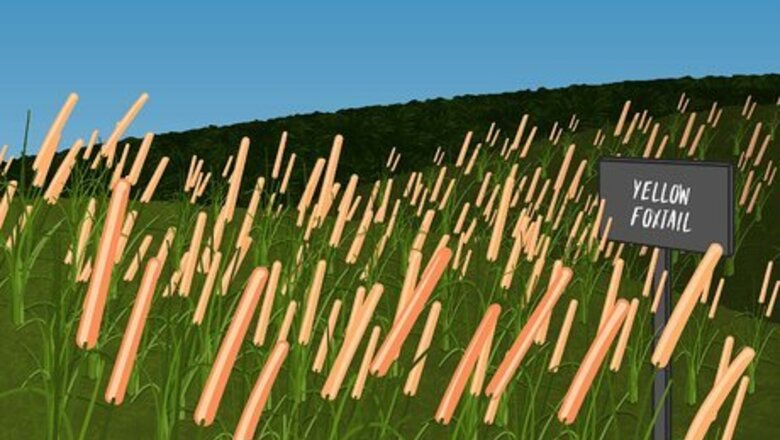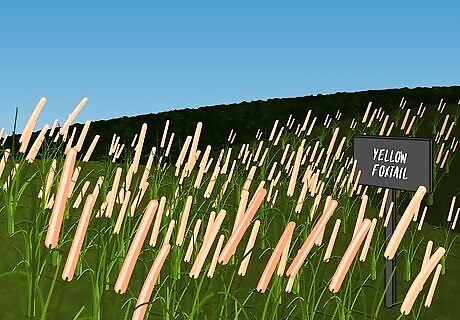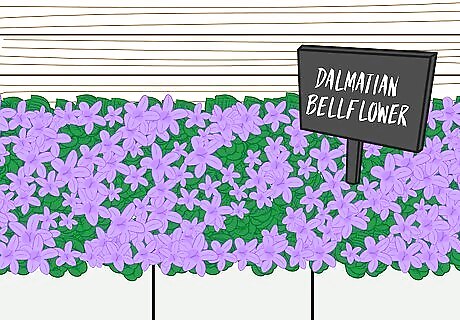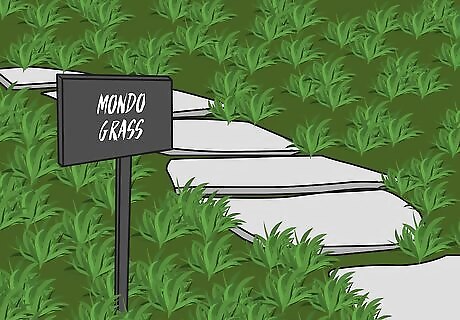
views
Using Ground Plants to Solve Problems

Stop soil erosion with spreading ground cover plants. Grow ground cover plants on hillsides, near streams, or in other areas where water wears the soil away. The roots of these ground plants will spread and absorb moisture. The densely growing plants will also help bind the soil. Ornamental grasses like yellow foxtail, blue fescue, and mondo are good options for this type of function.

Plant thick-growing ground cover plants to choke out weeds. Weeds can destroy your garden, leaving it sparse and uneven. Counteract this by planting ground cover plants that are robust enough to overpower weeds and prevent their growth in the future. It is best to curb overgrowth of these spreading plants by inserting root barrier panels into the soil. For instance, plant golden creeping Jenny, a perennial with an aggressive growth rate. Root barrier panels can be purchased at garden centers or hardware stores. Pull out any existing weeds before you plant new thick-growing ground cover plants.

Plant mosses to cover bare spots in the shade. Some ground covering plants thrive in the shade. Moss grows in shady areas that other plants don't, making it the perfect option for filling in bare spots that don't see any sunlight. Plant moss in bare spots under dense trees, or in areas shaded by buildings. Opt for either sheet moss or sprawling moss, the two fastest growing and versatile types.

Use fast spreading ground cover plants to replace grass. Plant evergreen ground cover plants in areas where grass won't easily grow, or to replace grass with something that requires less maintenance. Choose a type of plant that will spread quickly and cover the soil evenly. The plants should also be sturdy enough to handle foot traffic. For instance, plant golden oregano, a robust creeping ground plant. Golden creeping thyme is another fast-growing, spreading ground plant.
Choosing Decorative Ground Cover

Plant flowering ground plants to add color to your garden. To brighten up your garden space, choose ground plants based on the color theme or garden layout you want to achieve. Look online or in garden magazines for inspiration. Be sure to plant these in areas that get plenty of sunlight. Choose a plant like bigroot geranium if you want a low-maintenance option. Campanula portenschlagiana, also known as ‘Dalmatian Bellflowers,’ is another beautiful option, though it does require shelter in winter weather.

Plant leafy ground cover plants to add texture to your garden. Plant ground cover plants with large leaves to add a greener look to your outdoor space. These plants will require regular pruning to keep them looking neat. Some leafy ground cover plants to consider are: Ivy plants, which will spread and climb easily through your garden Lamb's-ears, perennial plants with fuzzy leaves and a silvery green hue Vincas, a low growing ground cover with green and white leaves Dymondia, a ground cover plant with slender, slightly curly leaves

Decorate spots next to paved areas with low maintenance ground plants. Ground plants can be used to fill in gaps near pathways, borders, and other structures. Opt for sturdy perennials that require little maintenance beyond occasional watering and trimming. These plants may include: Mondo grass, a grass-like ground cover plant Liriope, a ground cover plant often used as a border plant Hens-and-chicks, an old-fashioned ground cover plant that grows well between paving stones




















Comments
0 comment